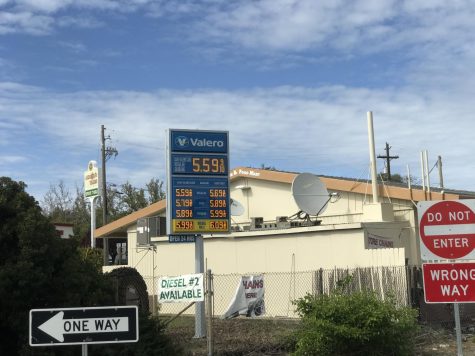Gas prices increasing in California
March 22, 2022
Gasoline prices have already been increasing gradually each year in California, however, there has been a dramatic increase in its cost recently.
The average regular gas prices in our state have reached $5.70 per gallon — nearly $6, while the national average is only $4.17. This is 58.7% more than its cost last year. In addition, Californians have to pay much higher prices, due to taxes, environmental laws, and location. 
Inflation related to the pandemic has significantly caused California’s fuel taxes to skyrocket along with the rise of living costs. Federal taxes and fees are other factors that played a role in the increase because of this year’s supply and demand issues. Even with a no-increase proposal that will be taking effect in July, it has little effect on its cost. These rising prices will mostly affect those experiencing poverty, in the working class, and also middle class Americans.
California fuel prices are higher, due to being a “unique blend of gasoline” that can be seldom found out of the state. We are one of the seventeen states that are using reformulated gas, which is fuel that is made to reduce toxic emissions in the air. Since the gasoline uses a supposedly unique blend of gasoline, it cannot be easily imported from other states.
Environmental fees and other strict California laws make up the rest of the variety of taxes that are placed on fuel, which help state programs to reduce greenhouse gas emissions. As a result, it costs drivers approximately an extra $1.19 per gallon. Nonetheless, these taxes go towards environmental regulations to help combat climate change and roadway maintenance.
 In addition, the Russia-Ukraine war has only exacerbated the cost of gasoline. As one of the top three oil producers of the world, Russia provides around 10% of the global supply of natural gas and oil. These products have been imported to Europe, the United States, and other countries over the past few years. The United States depends on Russia for 3% – 8% of the oil that is consumed.
In addition, the Russia-Ukraine war has only exacerbated the cost of gasoline. As one of the top three oil producers of the world, Russia provides around 10% of the global supply of natural gas and oil. These products have been imported to Europe, the United States, and other countries over the past few years. The United States depends on Russia for 3% – 8% of the oil that is consumed.
An executive order was later signed banning the import of Russian oil. Other traders and European refineries have reduced their purchases of the oil as well. This is in order to deprive Russia of economic resources to use to fund the war. President Joe Biden said in his speech that the sacrifice would be for the greater good to support the Ukrainian people even if it meant risking the U.S. economy to greater economic consequences.
Many countries are finding another solution to replace the fuel, such as looking for other gas suppliers and reducing the consumption of Russian gasoline. The most likely path that the U.S. will take is purchasing oil from other nations and increasing oil drilling. However, many are looking forward to a more environmentally friendly transition in order to save energy as well as money.

